How To Care for Air Plants: 11 Tips & Tricks
-
Greg Iacono
- Last updated:
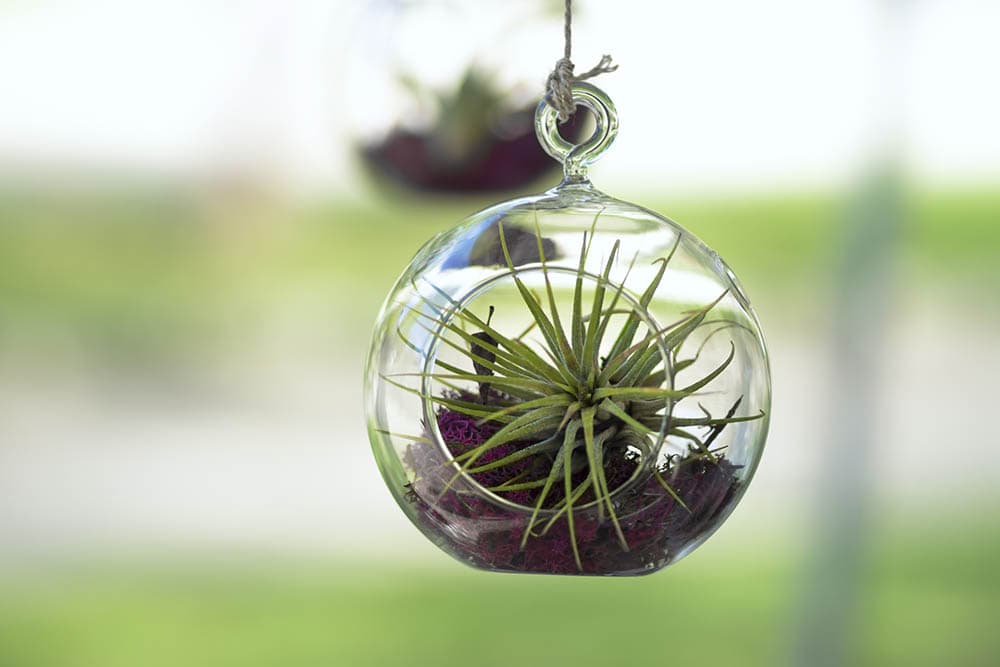
Air plants are fascinating species that do not need to be placed in soil to grow (hence their intriguing name). Technically known as Tillandsia, air plants are a type of epiphyte that uses another plant for support but gets its food, nutrients, and water through its leaves. In other words, they don’t hurt the support plant but need a support structure to attach. Air plants are found mainly in the West Indies, Central America, and South America. You can also find them in southern California, Arizona, Texas, and Florida, also.
There are a whopping 600+ species of air plants in various forms, colors, and sizes. Air plants are excellent and resilient indoor plants, making them perfect for folks without the greenest thumbs. We have 11 excellent tips and tricks below to help you care for air plants like a pro!
The 11 Tips & Tricks To Care for Air Plants
1. Submerge Your Air Plant in Water Once a Week
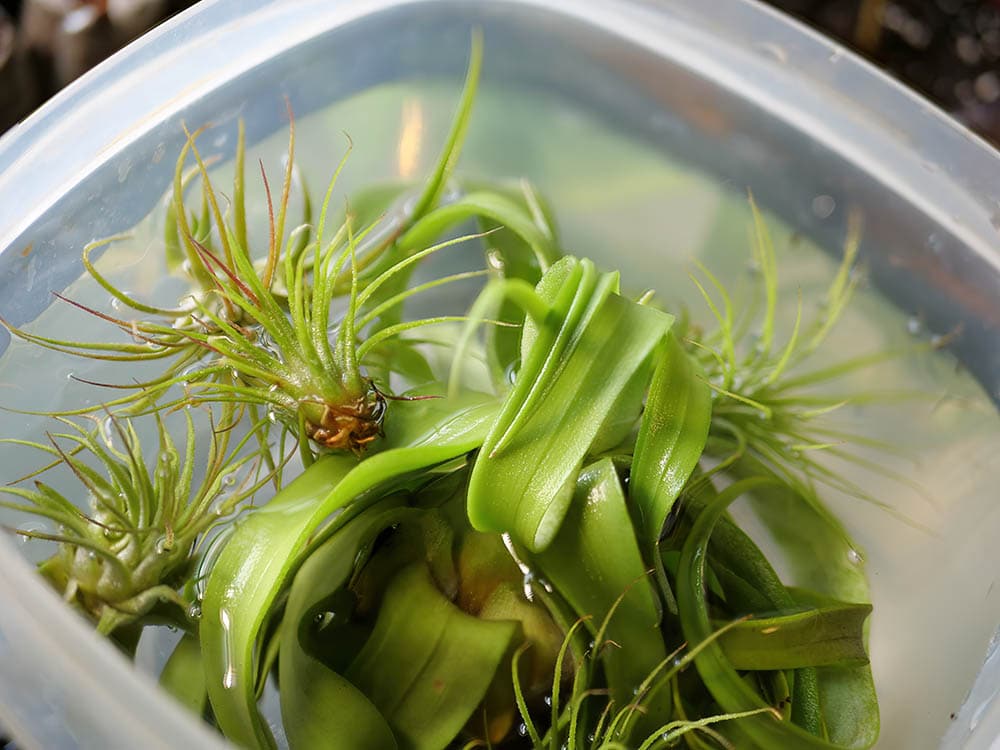
Air plants get water and nutrients through their leaves instead of their roots. For this reason, you must submerge them once a week, or at the max, every 10 days, in a container of water. Be sure to use tap water, filtered water, or, if you can, rainwater to soak your air plants. It’s recommended not to use distilled water since it lacks the minerals and nutrients your air plant needs to thrive. One last thing; if you use tap water, let it sit overnight so that any chlorine dissipates entirely.
2. A Moss Air Plant Can Be Watered By Misting
Moss, one of the most abundant air plants, is one of the few you can water with a misting bottle. However, one caveat is that you must mist your moss every day. If you don’t, it will do poorly and might dry out. As with other air plants, don’t use distilled water.
3. Your Air Plants Need Airflow

Air plants, not surprisingly, need a good amount of airflow to thrive, which can be difficult inside your home. That’s why, whenever possible, you should place air plants near a window that you can open to let in fresh, breezy air. If that’s not possible where you live because you have too few windows, rotating your air plants regularly is a good solution. That way, all your air plants (if you have multiple) will have a few days each to get the airflow they need.
4. Never Use Copper To Support an Air Plant
One well-known aspect of air plants is that they are incredibly hearty and durable. It takes an awful lot to kill a Tillandsia, but there is one thing that can: copper. Copper is a remarkable metal used to make all sorts of amazing products. However, copper, which goes by Cu on the Periodic Table, is toxic to most plants, especially air plants. When copper oxidizes, it interferes with a plant’s uptake of nutrients. That means you should avoid using the beautiful copper plant holders that have become trendy, even if they don’t touch your air plant. The reason is that water dripping from copper onto your air plant is just as harmful.
5. The Best Air Plant for Beginners Is Aeranthos
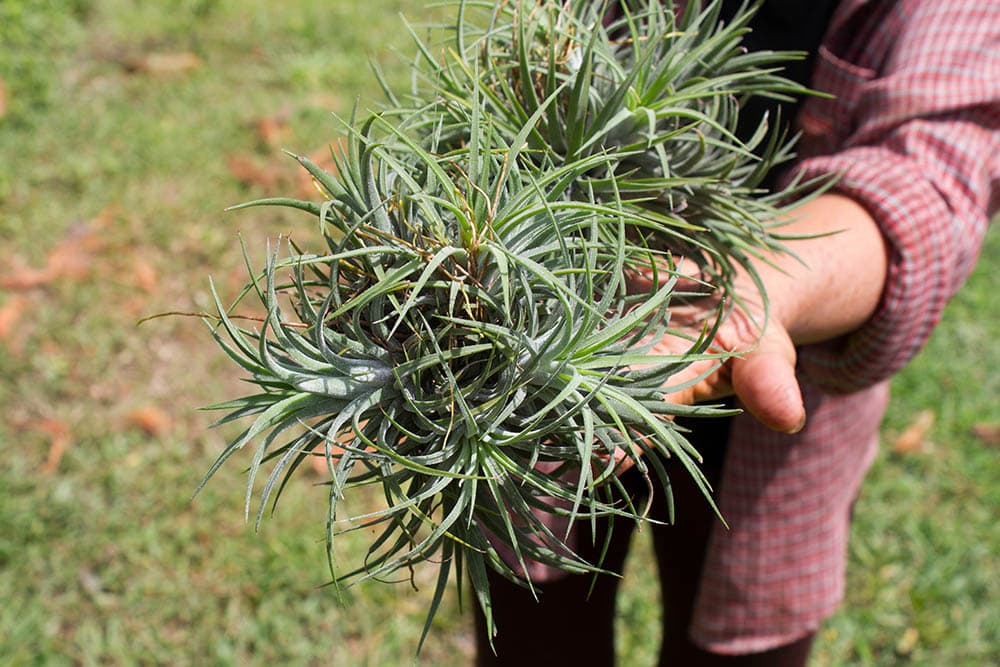
Aeranthos is one of the heartiest species and requires less water than most. They look amazing in a terrarium or desk plant and are 100% non-toxic to pets. Aeranthos prefer filtered sunlight, and they don’t need to be directly in front of a window. Plus, Aeranthos bloom some of the most beautiful flowers you’ve ever seen during summer!
6. Don’t Expose Your Air Plants to Temperatures Under 40° F
Air plants can take a lot of heat and will usually be fine, if watered well, up to 100° F. However, your air plants will not do well on the lower end of the temperature spectrum, especially at 40° F or lower. Even worse, if they freeze, most air plants will die. Experts recommend never letting the temperature drop below 50° F (10° C
7. Filtered Sunlight is Best for Most Air Plants

Plants love and need sunlight, and the air plant is no different. However, most like filtered sunlight, not direct, full sunlight. Morning sunshine is also preferable to afternoon sun since it’s safer for your air plants. If your plants are outside, picking a post where they will get filtered light is essential.
8. The Leaf Color of Your Air Plant Holds Some Interesting Facts About Their Native Environment
If you’re unsure how much light and water your air plant needs, a close look at its leaves will often give you a good clue. For example, an air plant with gray or fuzzy leaves typically comes from an environment with full sun and less water. The “fuzzy” part is created by a hair-like structure called trichomes, which prevent water loss and insulate the air plant.
If your air plant has darker, green leaves with less fuzz, that indicates it came from a wetter climate where it had less sun and more shade. Whatever the case with your air plant(s), your best bet is to mimic the environment from whence they came.
9. Air Plants Don’t Need Pots
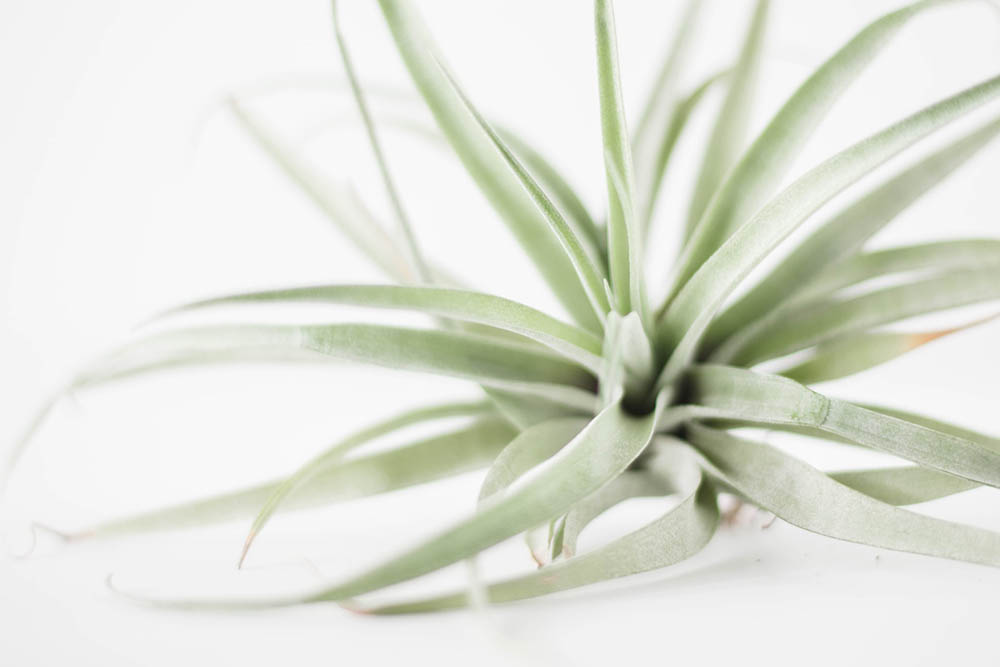
Yes, you can put an air plant into a traditional pot, and with the right care and support, it will do just fine. However, the best thing about air plants is that you don’t need a pot! You can, for example, attach an air plant to a cork mount and then hang it on the wall. Air plants thrive in terrariums and do well in almost any hanging basket, even a tiny, shallow one.
10. Bromeliad Fertilizer Is Best for Air Plants
Although they don’t need fertilizer often, you should consider fertilizing your air plants in spring and summer. Air plants do best with bromeliad fertilizer which you can find in almost all garden centers and big-box home improvement stores. Air plants need even less fertilizer if you water them with rainwater or water from an aquarium or pond since water from those sources will contain more vitamins and minerals. If you can’t find bromeliad fertilizer, you can use a water-soluble houseplant fertilizer at 1/4 of its recommended strength.
11. Cut Off Air Plant Pups to Grow New Air Plants
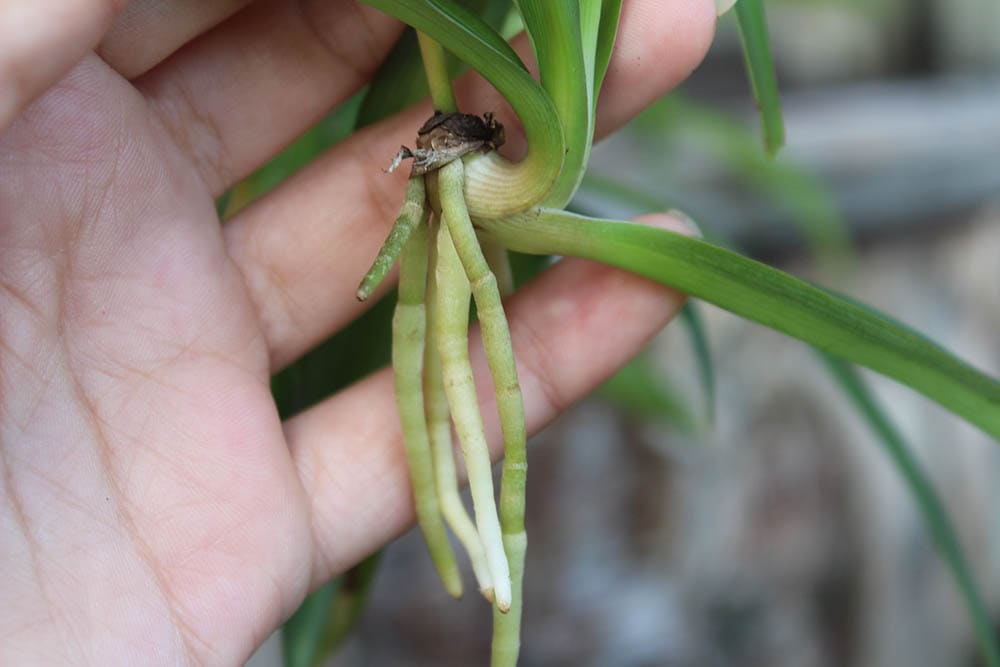
Did you know that air plants can have pups? An air plant grows miniature versions of itself that you can cut off and grow into a new, independent air plant. Depending on the air plant species, they do this after their first bloom cycle, which can take 6 months to several years. Once a pup reaches about ⅓ the size of its mother plant, you can cut it off and grow it in its own container or hanger. Or, if you wish, you can just let it grow on the mother plant. Air plant enthusiasts covet a large air plant ball.
Final Thoughts
We hope you enjoyed these tips and tricks for caring for air plants. Air plants are truly fascinating and will thrive in most environments with basic care. Watering is the most important task since you must regularly submerge your air plants. Since they don’t need pots, they can be placed in various containers or no container at all! Best of luck growing air plants in your home and enjoying their wild and incredible beauty.
- Related Read: Is My Air Plant Dead? (6 Signs to Look For)
- https://www.airplantsupplyco.com/blogs/articles/6369828-what-are-air-plants
- https://www.familyhandyman.com/article/grow-air-plants/
- https://www.airplantman.com/blogs/blog/5-simple-tricks-to-keep-your-airplant-alive
- https://www.bhg.com/gardening/houseplants/care/how-to-water-air-plants/
- https://www.sigmaaldrich.com/PE/es/technical-documents/technical-article/chemistry-and-synthesis/organic-reaction-toolbox/periodic-table-of-elements-names
- https://www.happysprout.com/indoor-plants/tillandsia-aeranthos-guide/
- https://pistilsnursery.com/blogs/journal/air-plant-care
- https://savvygardening.com/air-plant-care/
- https://succulentsbox.com/blogs/blog/how-to-grow-an-air-plant-collection-fast-and-free
Featured Image Credit: luca85, Shutterstock
Contents
